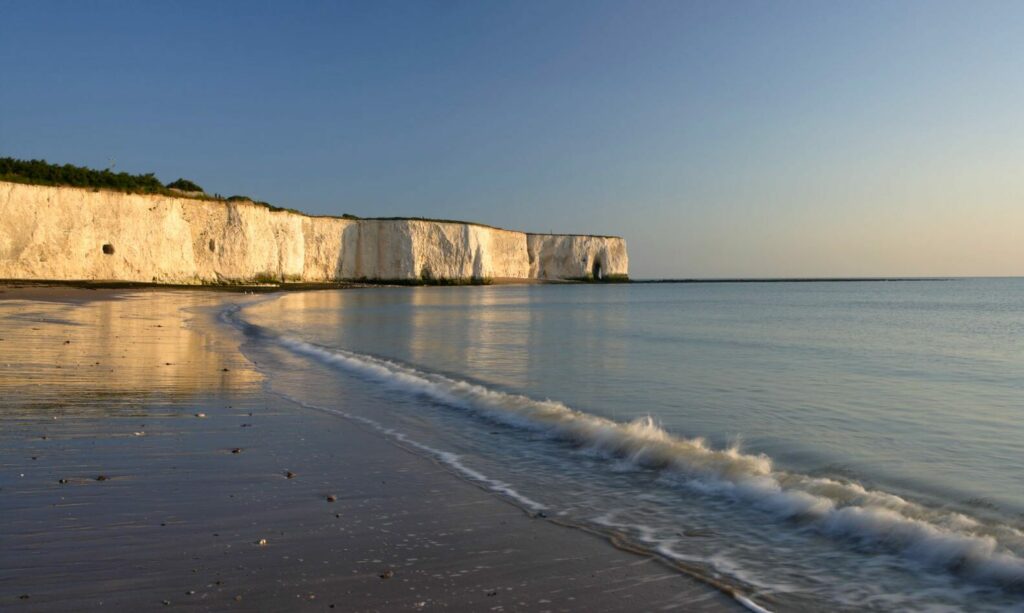Local Nature Recovery Strategy (LNRS)
Established under the Environment Act 2021, LNRS provides the opportunity to deliver an ecologically coherent and landscape scale, strategic approach to nature recovery.
Kent and Medway will be covered by one LNRS. Kent County Council is the responsible authority, as appointed by the secretary of state. The Kent & Medway LNRS will be developed outside the KNP official framework but will rely heavily on our established partnership and the relationships developed over the years
Regulations and guidance for LNRS was published at the end of March 2023 and the KCC led Making Space for Nature in Kent and Medway Project that will develop the strategy, was launched in the autumn of 2023 (see blog). The strategy will be complete for May 2025 and delivered by a wide range of stakeholders.
Purpose of LNRS:-
o Local Planning Authorities will have a duty of regard to LNRS.
o LNRS will have spatial role in Biodiversity Net Gain (BNG).
o LNRS is expected to play role in Environmental Land Management Scheme (ELM) delivery.
o LNRS will help Identify other Nature based solutions (NbS) and potentially direct funding.
Wide engagement with landowners and other stakeholders will be the foundation for LNRS along with mapping and strategy. LNRS will provide a source of evidence for local planning authorities to prepare their Local Plans, helping these authorities understand locations important for conserving and enhancing biodiversity
Preparatory work to date, through the KNP LNRS working group:-
o KWT and KMBRC have reviewed existing local data that could be used to inform mapping work.
o Potential criteria for mapping/defining recovery zones – opportunities for nature – have been put forward and tested by KWT and reviewed with the group, but nothing definitive yet.
o Review of Kent Biodiversity Strategy against national objectives for nature recovery networks have shown an alignment and suggests this provides a good, already per-tested and publicly consulted strategy on which to frame the LNRS.
Whilst we await the LNRS secondary legislation, we will undertake a sense check the KBS objectives and targets against the current priorities for the county to ensure they remain current and relevant for us in the LNRS.

As spatial strategies, LNRS will establish priorities and map proposals for specific actions to drive nature’s recovery and provide wider environmental benefits. Secondary legislation and statutory guidance, yet to be published will contain the detail, but what we do know is that at a minimum each LNRS will include: –
- Agreed priorities for nature’s recovery.
- A map of the most valuable existing areas for nature.
- A map of proposals for creating or improving habitat for nature.
- Inclusion of wider environmental goals.

The production of each LNRS will be evidence-based, locally led and collaborative, to create a network of shared plans that public, private, and voluntary sectors will all help to deliver. The anticipated 50 Local Nature Recovery Strategies will underpin England’s Nature Recovery Network, a national network of wildlife-rich places to increase and restore nature.

The planning role for LNRS will be backed by a specific duty on all public authorities to “have regard” to relevant LNRS and a duty for specified public bodies to report every five years on what action they have taken. Each Strategy will also reflect planned or ongoing nature recovery activity, in order to improve integration between existing efforts to improve the environment.
The coronavirus pandemic has drawn further attention to the importance of access to nature and green space to health and wellbeing and has also highlighted where there may be areas of deprivation in this regard. Consequently, it has been suggested that a LNRS may also identify opportunities to increase access to nature whilst supporting its recovery. Whether the government will enable the inclusion of this or provide guidance is not yet clear.

The broad process for the preparation of a LNRS includes (from the LNRS pilots): –
• Government provides a map of each Strategy area, including habitats and national conservation sites.
• Locally held data is added to the map, including locally identified wildlife sites.
• Description of the Strategy area, including its key habitats and potential opportunities to create or improve them.
• Identification of outcomes, achieved through creation or improvement of habitat, and grouping of these into “priority” and “other”.
• Potential measures for creating or improving habitat to achieve the priority and other outcomes.
• Mapping of suitable locations for the delivery of the potential measures onto map of existing habitat.

The above steps will combine to inform the “statement of biodiversity priorities” the “local habitat map” for the LNRS.

